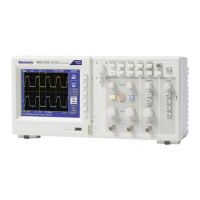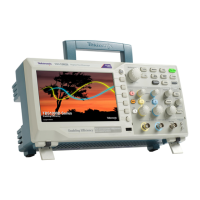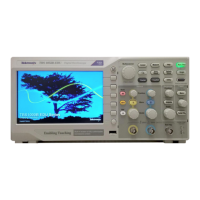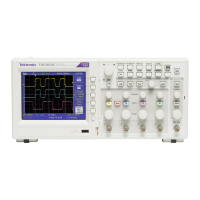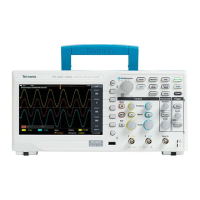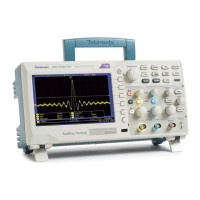Acquire. Displays the Acquire Menu.
Ref. Displays the Reference Menu to quickly display and hide reference
waveforms stored in the oscilloscope non-volatile memory.
Utility. Displays the Utility Menu.
Cursor. Displays the Cursor Menu. Cursors remain visible (unless the Type
option is set to Off) after you leave the Cursor Menu but are not adjustable.
Help. Displays the Help Menu.
Default Setup. Recalls the factory setup.
Autoset. Automatically sets the oscilloscope controls to produce a usable display
of the input signals. When held for more than 1.5 seconds, displays the
Autorange Menu, and activates or deactivates the autoranging function.
Single. (Single sequence) Acquires a single waveform and then stops.
Run/Stop. Continuously acquires waveforms or stops the acquisition.
Save.
By default, performs the Save function to the USB flash drive.
Input connectors
1 and 2. Input connectors for waveform display.
Ext Trig. Input connector for an external trigger source. Use the Trigger Menu to
select the Ext, or Ext/5 trigger source. Push and hold the Trigger Menu button to
see trigger view, which will show how the trigger settings affect the trigger
signal, such as trigger coupling.
PROBE COMP. Probe compensation output and chassis reference. Use to
electrically match a voltage probe to the oscilloscope input circuit. See Manual
probe compensation on page 5.
Operating basics
16 TBS1000B and TBS1000B-EDU Series Oscilloscopes User Manual

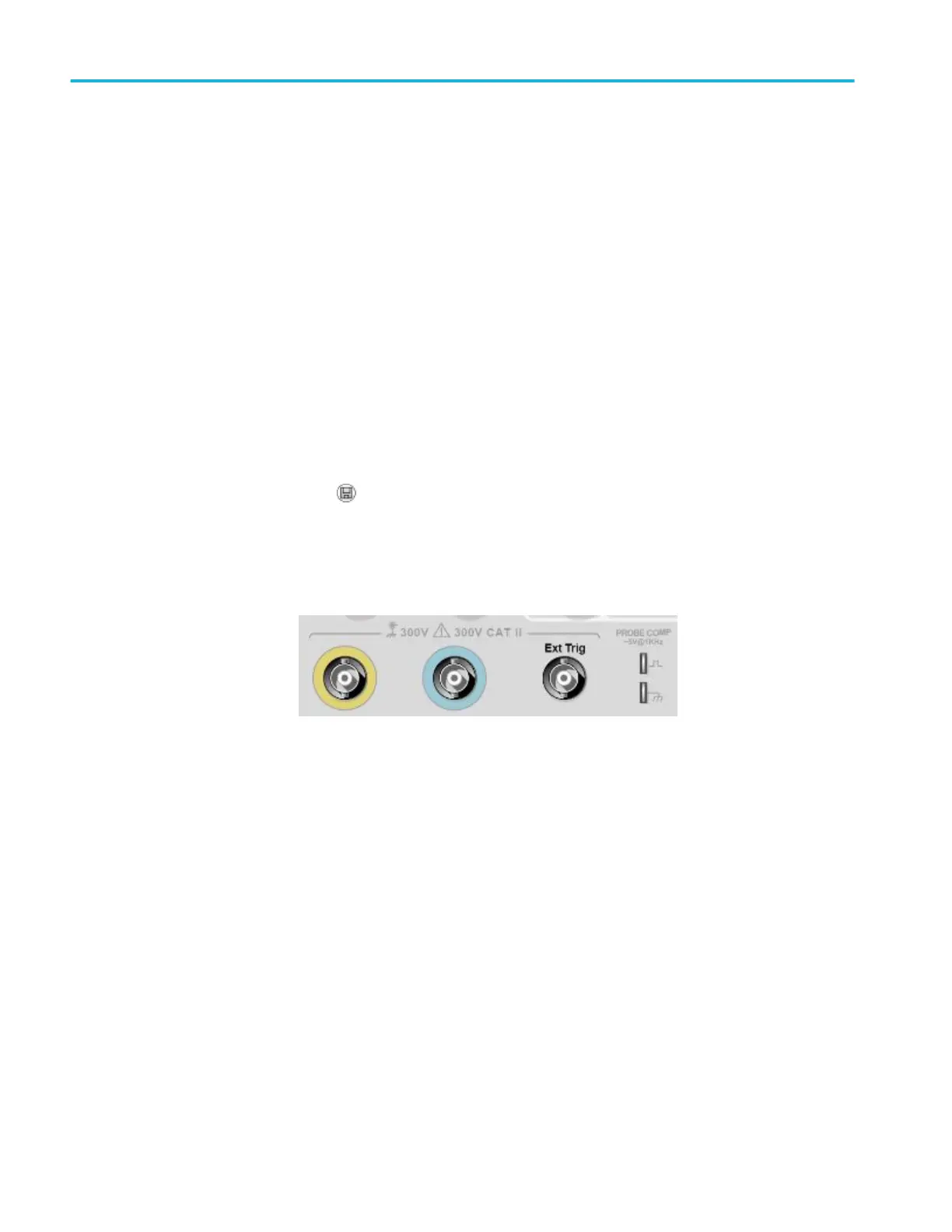